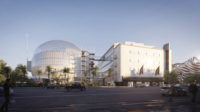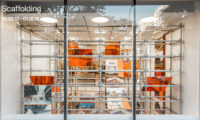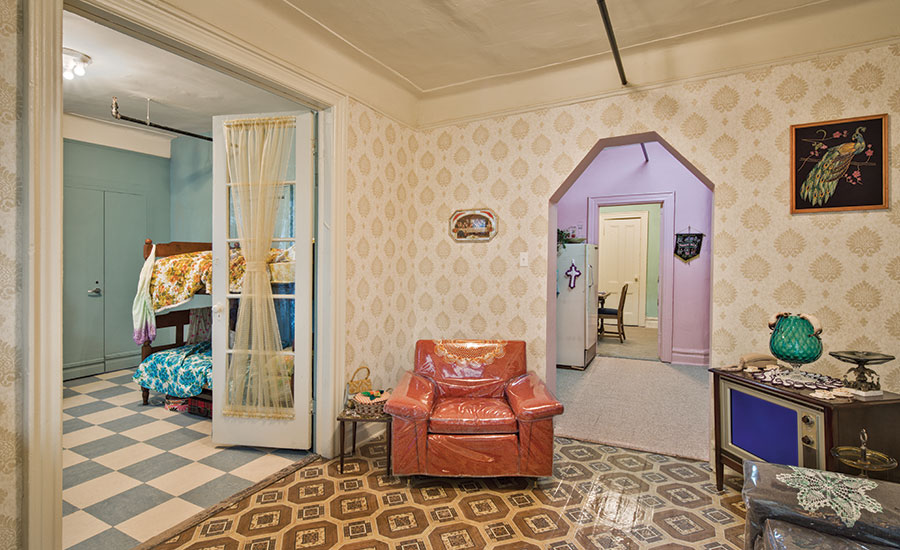The Tenement Museum Adds New Exhibition Space

The new exhibit, Under One Roof, includes an apartment unit refashioned as it was when former tenants lived in the building.
Photo © Tenement Museum

Much of the space was left in its original decaying state, to connect visitors to the experience of the immigrant families who resided there.
Photo courtesy Perkins Eastman

Photo © Paúl Rivera, courtesy Perkins Eastman



Architects & Firms
Manhattan’s Tenement Museum offers a trip back in time to when the now ultra-gentrifying Lower East Side was a melting pot of working-class immigrants struggling to make better lives with limited means. Founded in a squalid 1863 tenement building at 97 Orchard Street in 1988, the museum has become a staple for school trips and history buffs, with its apartments painstakingly restored to what they were when occupied in the late 19th and early 20th centuries by poor families from Italy, Germany, Ireland, and Eastern Europe. A recent expansion by Perkins Eastman into a separate, five-story historic building at 103 Orchard—purchased by the museum in 2007—provides more space for exhibitions and staff.
The project is the last phase of Perkins Eastman’s 10-year master plan for the institution. In 2011, the firm added a visitors center and gift shop, classrooms, and support spaces within the first, second, and basement levels of 103 Orchard, at the corner of Delancey Street. But the apartments on the upper levels were still occupied, so work on the expansion couldn’t begin, ironically, until the tenants relocated.
Now, on each of the upper three floors, three dumbbell-shaped railroad apartments, separated by two airshafts, are connected via glazed passageways. The exhibition space, all on the third floor, focuses on the shifting immigrant communities after World War II. Part of it includes a replica of a small Chinatown garment factory. The only restored unit has different rooms recreating living spaces of three families—refugees from Poland, migrants from Puerto Rico, and immigrants from China—who inhabited the building for different periods post-1944. Unlike the grimmer quarters displayed in 97 Orchard, these spaces are colorfully decorated with ornate wallpaper and patterned linoleum flooring, and filled with objects illustrative of modern consumerist culture. Still, the accommodations were modest, without amenities we think of as basic, such as private toilets.
The fourth and fifth floors provide open office space for approximately 40 employees. Floor-to-ceiling glazing for private rooms and offices, as well a skylight on the top level, let in ample natural light.
Gutting the apartments and stabilizing the structure, a process that Perkins Eastman principal Nick Leahy calls “part archaeological dig, part forensics,” had its challenges. The architects discovered that a hodgepodge of renovations since the building was erected in the 1860s had altered its structural integrity, introducing quirks such as hidden floors and haphazardly placed beams. Leahy says that demolishing parts of the building was like playing a game of Jenga—the team had to be careful that removing components would not result in the structure’s tumbling.
The tightness of the construction site also complicated the work, especially since the visitors center remained open for the duration of the project. Building materials and debris were hoisted up and down from the street, and large steel beams had to be cut and put back together inside.
Throughout the renovation, the design team kept what they could of the building’s decrepit state, leaving decaying layers of plaster, mortar, brick, and paint to connect visitors’ experiences to those of tenants past. New finishes were kept to a minimum to make the architectural intervention less noticeable. This presented the unusual challenge of clearly communicating to contractors what to get rid of and what to keep. One of two rotting bathrooms on the third floor, for example, was accidentally demolished. “We had to get them into the museum’s mindset,” Leahy says.
For Leahy, the project was an exercise in discovering and interpreting clues to the past. “It has caused me to look at things differently. If I see a ghost of a doorway, I wonder, ‘Why is it like that, and what was there before?’ ” he says. “It’s really about finding out what’s extraordinary in the ordinary.”







